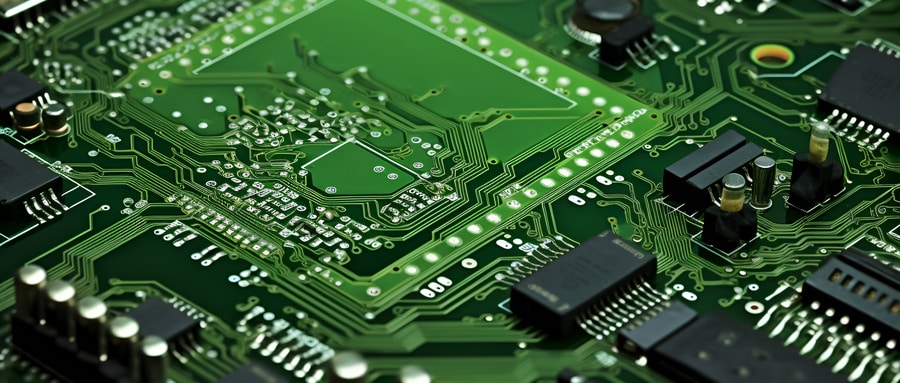Demystifying PCB Thermal Conductivity: Essentials, Best Practices, and Future Perspectives
Thermal conductivity is an indispensable element of PCBs, impacting their functionality, durability, and overall performance. Understanding thermal conductivity becomes ever more crucial as we navigate the realm of electronics; so in this comprehensive guide we’ll discuss all essentials related to PCB thermal conductivity such as best practices and future considerations.
1. An Introduction to PCB Thermal Conductivity
Thermal conductivity refers to the ability of materials to transfer heat. PCBs serve as the foundation of electronic devices and must manage thermal conductivity effectively to ensure proper functioning and prevent overheating.
2. Importance of PCB Thermal Conductivity
Heat management on PCBs is key to maintaining optimal performance. Without adequate heat dissipation, components could overheat and lead to decreased efficiency, potential damage or even system failure.
3. Factors Affecting PCB Thermal Conductivity
Multiple factors affect PCB thermal conductivity. These include the type of material used for its construction, its thickness, the layout of components on it and their total amount of heat generation.
3.1 PCB Material
Different PCB materials offer various levels of thermal conductivity. Aluminum and copper boards feature higher conductivities than traditional FR-4 material, making them better suited to higher power applications.
3.2 Thickness of PCB
PCB thickness directly impacts its thermal conductivity. Thinner PCBs tend to disperse heat more evenly, while thicker boards might require additional measures for effective heat dissipation.
4. Strategies for Optimizing PCB Thermal Conductivity Management
Now that we understand the factors affecting thermal conductivity, let’s explore some effective practices for managing it.
4.1 Installing Heat Sinks on Boards
Heat sinks are essential components for managing thermal conductivity on PCBs and are one of the best tools available for managing PCB thermal conductivity.
4.2 Effective Component Placement and Design Strategies
Proper design and placement of components also play a significant role in controlling thermal conductivity. For instance, keeping high-power components away from each other may prevent local overheating issues.

5. PCB Thermal Conductivity: Analyses of Future Prospects
Technology continues to develop, and with it comes an increasing need for efficient thermal management in PCBs. Recent advancements in material science such as high thermal conductivity composite materials and improvements to heat dissipating techniques represent some of the trends we can expect in the near future.
Understanding and controlling PCB thermal conductivity are fundamental to the successful operation of electronic devices. No matter if you’re an amateur PCB enthusiast or professional in this field, developing an in-depth knowledge of thermal conductivity principles will only increase your expertise in this area.
Today marks the completion of our extensive examination of PCB thermal conductivity. By having gained more insight, you should now be equipped to maximize performance, efficiency and longevity for any future PCB designs you undertake.
FAQ:
- Q: What is PCB thermal conductivity?
A: PCB thermal conductivity refers to the ability of a PCB material to conduct or transfer heat. It is a crucial property that can affect the performance and longevity of the PCB and the entire electronic device. - Q: Why is thermal conductivity important in PCB design?
A: High temperatures can damage electronic components and reduce their lifespan. So, PCBs with good thermal conductivity can help dissipate heat more efficiently, thereby improving the performance and durability of the device. - Q: What PCB material is known for its thermal conductivity properties?
A: While various PCB materials vary in thermal conductivity, Aluminum is widely recognized for good thermal conductivity properties. - Q: How is thermal conductivity measured?
A: Thermal conductivity is typically measured in watts per meter-kelvin (W/m*K). The higher the value, the better a material is at conducting heat. - Q: What is the thermal conductivity of an FR4 PCB material?
A: Standard FR4 material typically has a thermal conductivity of around 0.2 W/m*K, which is relatively low compared to materials like Aluminum. - Q: How can I improve the thermal conductivity of my PCB?
A: You can improve PCB thermal conductivity by using materials known for high thermal conductivity, like Aluminum or Copper. Additionally, utilizing heat sinks, thermal vias, and ensuring efficient PCB layout can also help improve heat dissipation. - Q: How does thermal conductivity impact component selection?
A: Some components produce more heat than others. Understanding thermal conductivity helps in selecting components that operate effectively within the designed temperature range of the PCB. - Q: Can the PCB assembly process affect thermal conductivity?
A: Yes, the assembly process, such as the type of solder used, can influence the overall thermal conductivity of the PCB. - Q: What is a ‘thermal via’ in a PCB?
A: A thermal via is a hole on a PCB filled with a conductive material (usually copper). It’s used to transfer heat from one side of the board to the other, helping improve thermal conductivity. - Q: Are there any design techniques to improve PCB thermal conductivity?
A: Proper placement of heat-generating components, effective use of thermal vias, and ensuring good airflow in the PCB design can all contribute to improving thermal conductivity.























